WILDER NATIVES
AMAZING ASTERS
Nothing says fall in New England like a hillside patchwork of asters coming into bloom. Right up there with Solidagos (goldenrods), according to the National Wildlife Federation, local native asters support 100 species of Lepidoptera caterpillars. Additionally, 33 species of pollen specialist bees rely on these plants for their nectar source. In turn, many of these insects support our local birds and amphibians. Asters are all super hardy, most down to Zone 4 or even 3. Many get quite tall, but respond well to shearing in late June for a shorter/fuller fall presentation. For better or worse, the taxonomists have recently gotten hold of the aster family, and broken it up into at least two new genera, Eurybia and Sympyotrichum. Here at the Judges Farm, located at the mouth of the mighty Connecticut River, we’ve partnered with local land trusts and landowners and responsibly collected ten (and counting!) local ecotype species of our prized asters. Here they are…

Doellingeria umbellata: Flat-Topped Aster
First spotted this gem on the north shoulder of I-95 in Old Lyme. We had safely! pulled over to check out a stunning patch of New York ironweed, and upon closer inspection, found a beautiful natural combination of this white aster, pink joe pye weed, and the purple ironweed growing happily in the wetland margin. Flat-topped aster goes to 6’ tall, but can be kept shorter with a June shearing. It boasts rich purple stems, and swarms of bright white blooms with cheery yellow centers. Enjoys medium to moist soils and full sun, and blooms non-stop for a month and a half beginning in midsummer. Probably our favorite native aster.
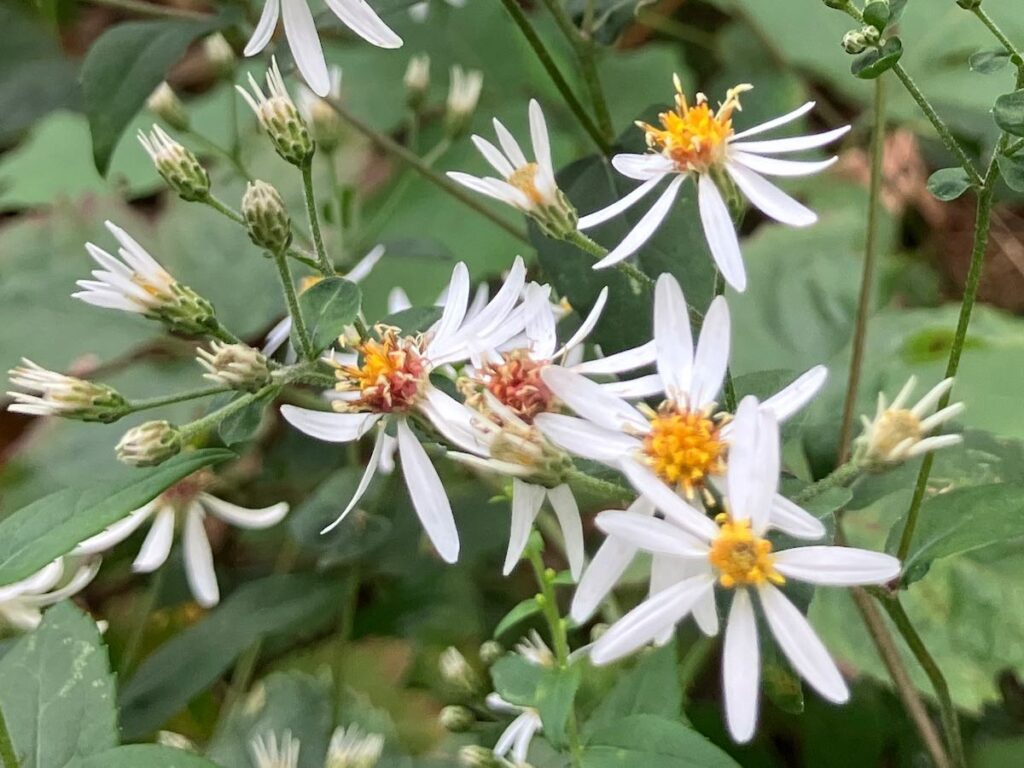
Eurybia divaricata: White Wood Aster
Right on time, in early September as the calendar flips to fall, shaded roadsides and open woods burst forth with the starry white blooms of white wood aster. Heart-shaped foliage and purple stems stand in support, reaching 1-3’ tall, and spread slowly through underground rhizomes to make a magically glowing shady understory. Airborne seed helps spread these plants as well, so don’t cut back too soon!
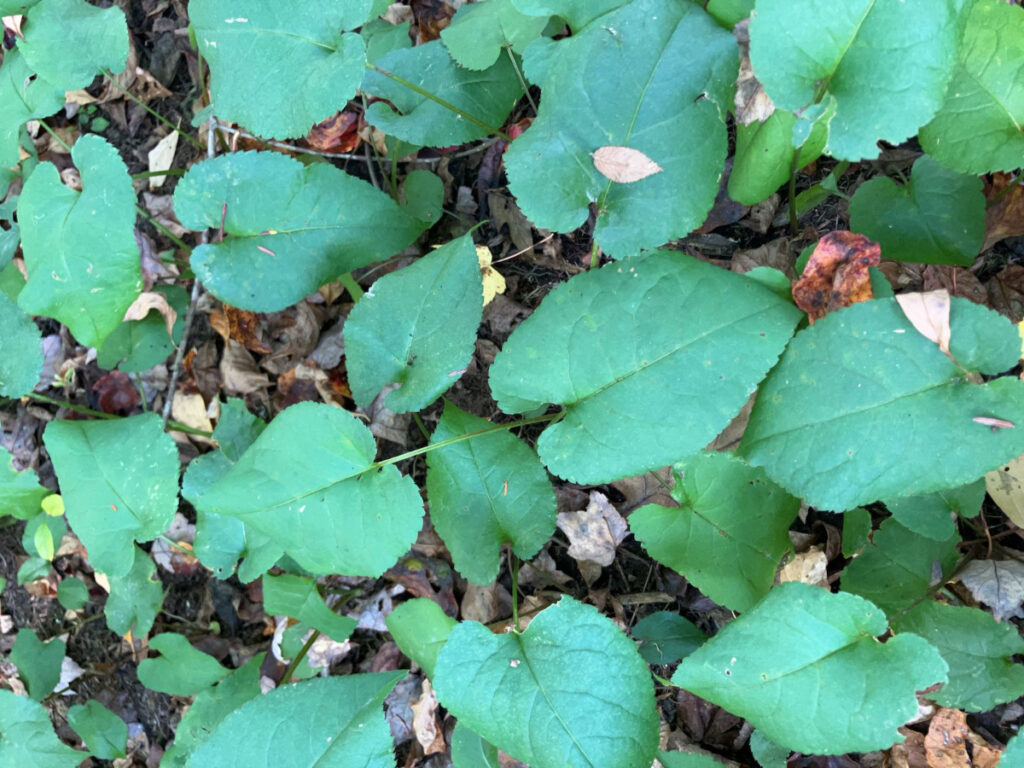
Eurybia macrophylla: Big-leaved Aster
Big-leaved aster pushes further into the shade, forming a loose mat of ground-hugging 6-10” long oval leaves. Happiest in bright shade, and medium to dry well drained soil, blooms sparingly in late summer with 15” tall stems adorned with ½” rayflowers that range from white to blue to lilac. Beautiful on a slope, where rhizominous roots can help stabilize soils. A prized and underused gnative groundcover!
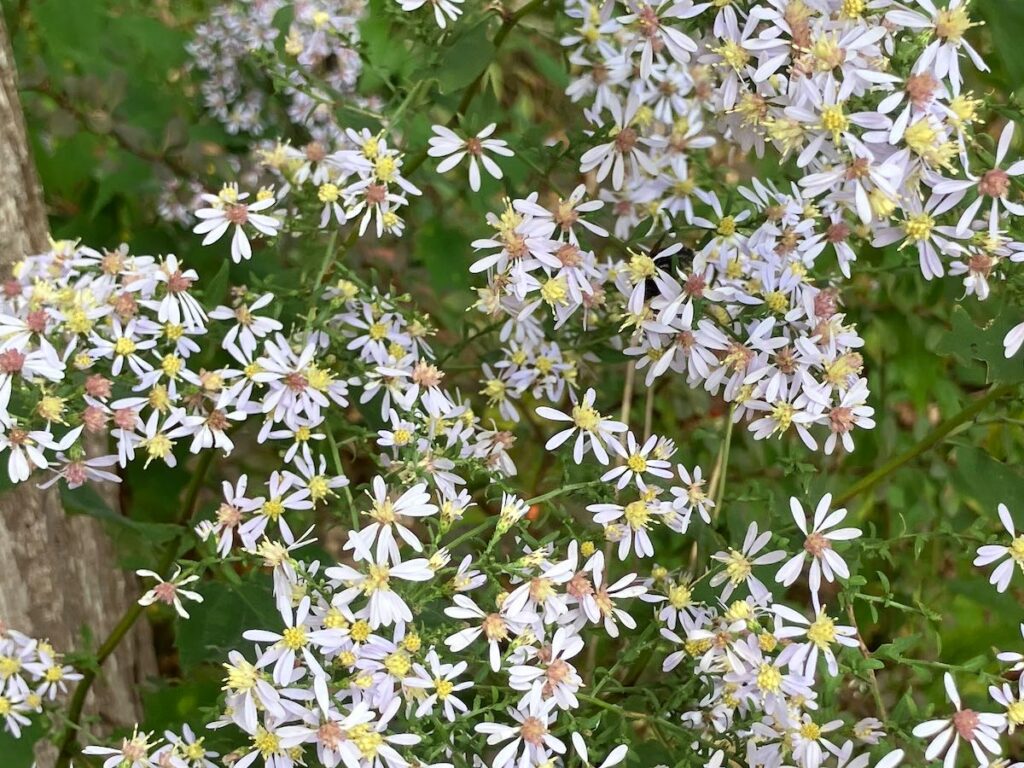
Symphyotrichum cordifolium: Heart-leaved Aster
One of those plants you always wish you had more of when they come into billowy blue bloom in October. These arching 2-4’ plants are smothered in light blue blooms, and enjoy average soils in part shady situations. Late season wasps, bees, skippers and moths flock to this plant as the season begins to unwind.
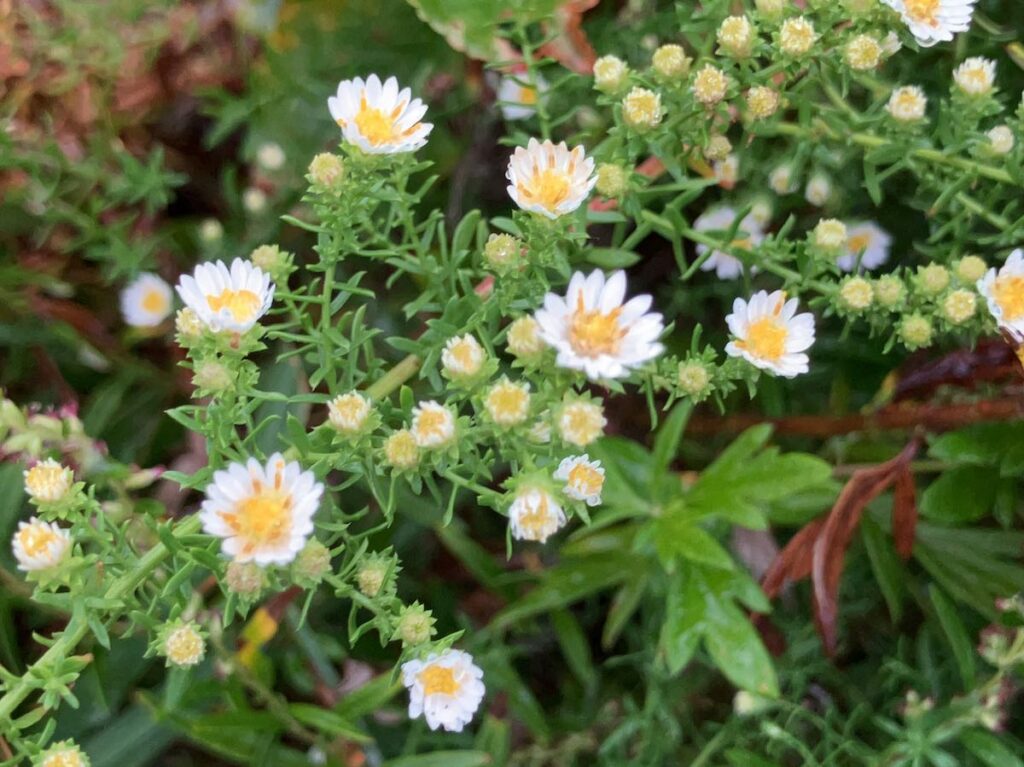
Symphyotrichum ericoides: White Heath Aster
Tough as nails heath aster can be found on ledgy dry sunbaked ground, and can even take seaside salt spray. This diminutive plant goes just 1-3’ tall, and sports arching woody stems with fine needle-like foliage. In early fall, small starry bright white blooms erupt all along the stems, completely coating the plants. Plant it in crevices, walls and border fronts where it can be seen closeup, you won’t be disappointed!
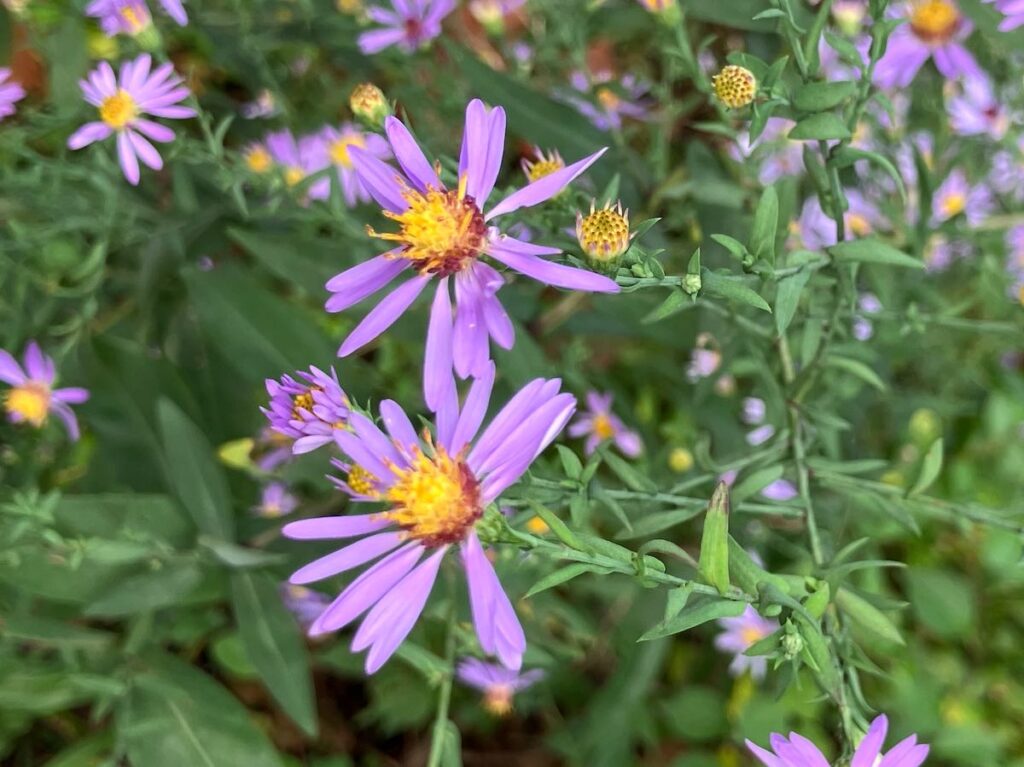
Symphyotrichum leave: Smooth Aster
So-named for the smooth, hairless leaves and stems of this graceful purple blooming fall aster. Smooth aster prefers bight sun to part shade, and isn’t finicky in average garden soils. As with many asters, we often see smooth aster happily blooming on roadsides, ditches and hayfield edges.
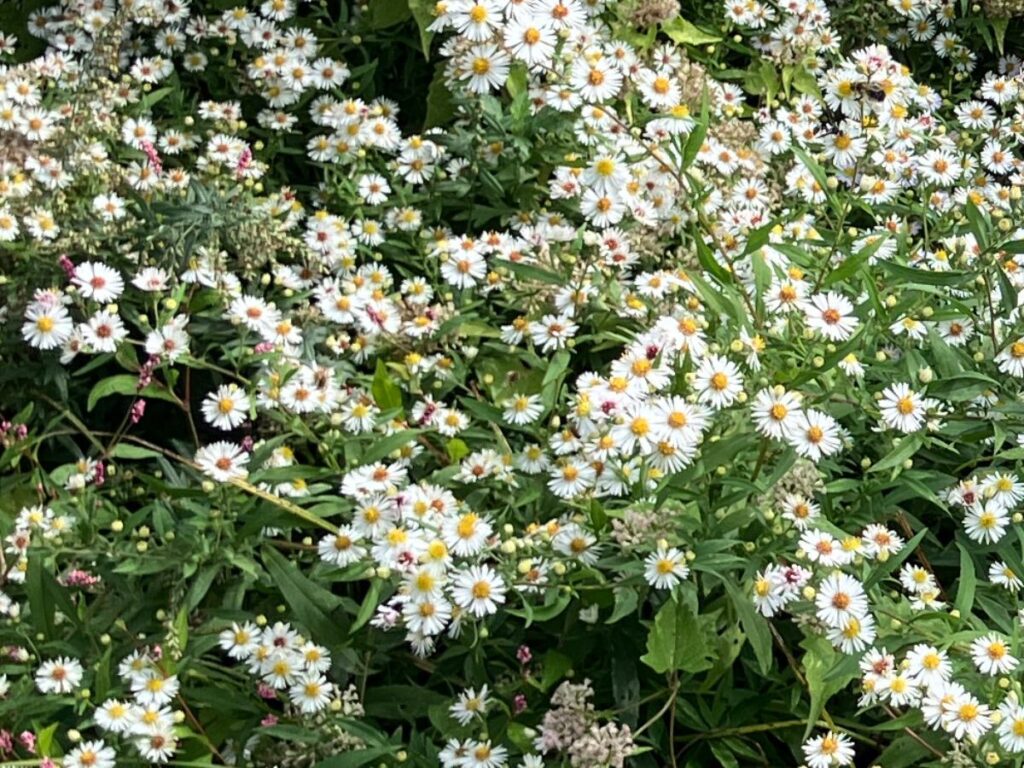
Symphyotrichum lanceolatum: Panicled Aster
This late-blooming fall aster is aggressive in moist areas. In fact, its one of the few plants we’ve found that can compete with the dreaded invasive chrysanthemum weed, or mugwort in these wet areas. Panicled asters spread both rhizominously, and from seed, producing clumps of 4-6’ arching stems, covered with starry white panicles of bloom from mid to late fall. Give it space, and let it go!
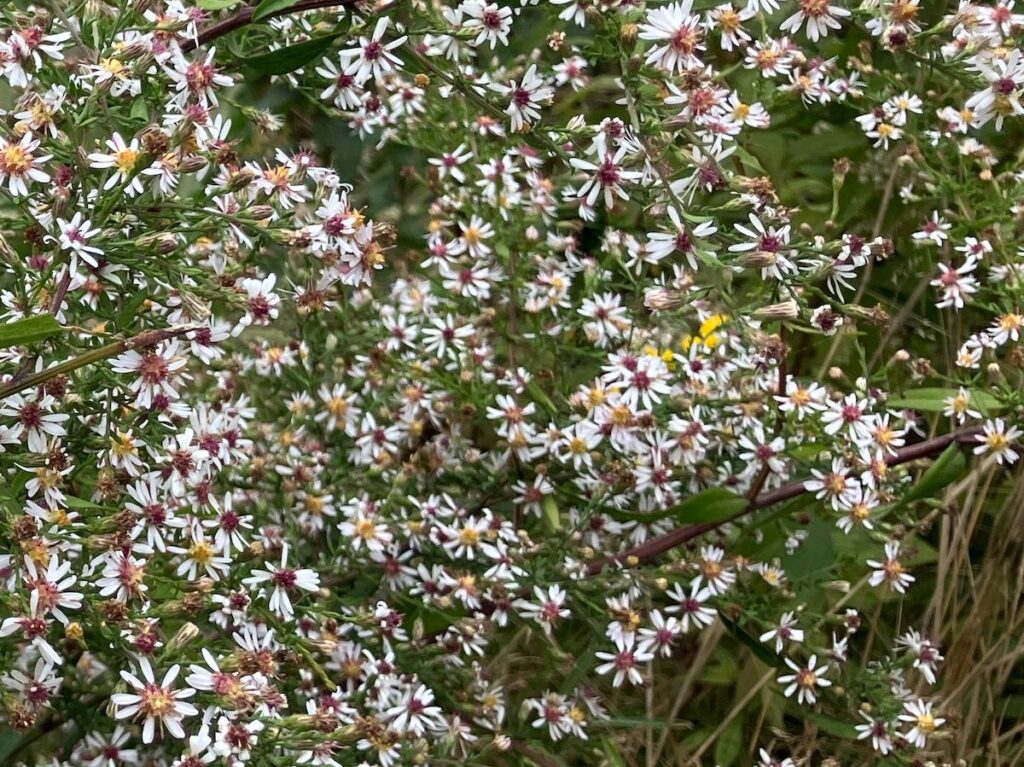
Symphyotrichum lateriflorus: Calico Aster
Calico aster thrives in sunny medium to dry meadows, and reaches 1-3’ tall and wide. It gets its name from the multi-colored flower centers, ranging from pink to purple to red and yellow. Clouds of white rayflowers are a delight for any fall display, and a host of pollinators would agree!
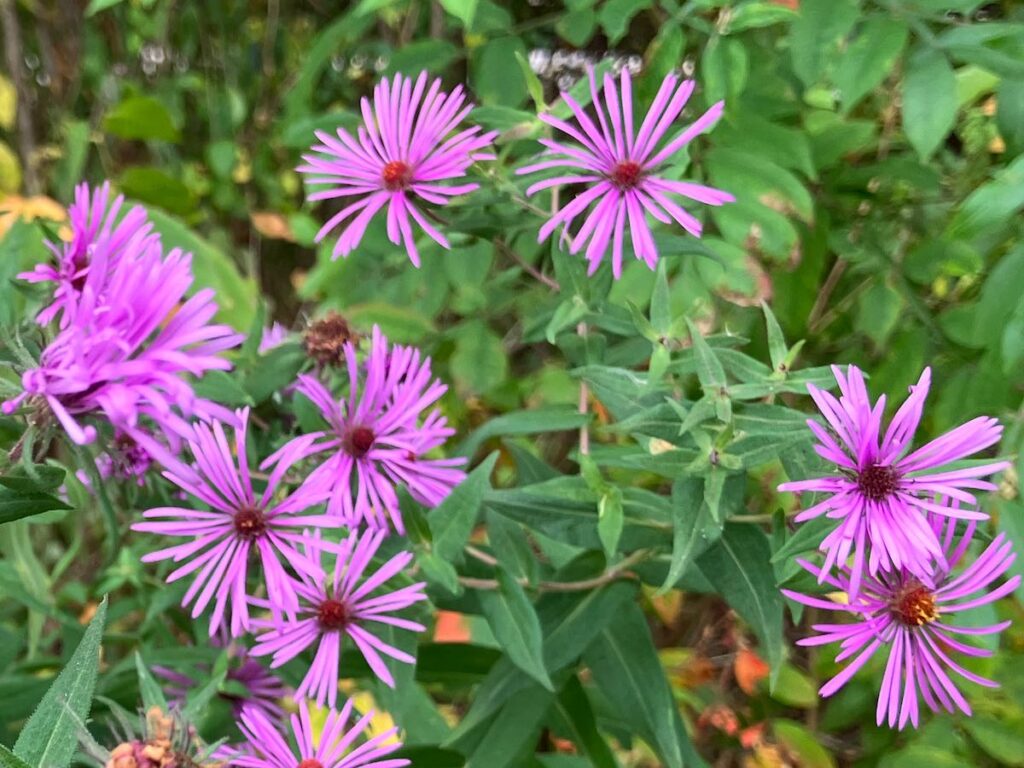
Symphyotrichum nova-angliae: New England Aster
Really the quintessential purple fall aster in the region, the New England aster stands tall at 3-5’ in open meadows, swales and field edges. Sturdy clustered stems feature soft green lance-shaped foliage, and boast bright purple panicled blooms from late August well into October. In late summer and fall, the foliage can tend to go a bit ratty, so best to surround these plants with slightly shorter Solidagos, mountain mints, and Rudbeckias. Give them full sun, and any soil besides very dry.
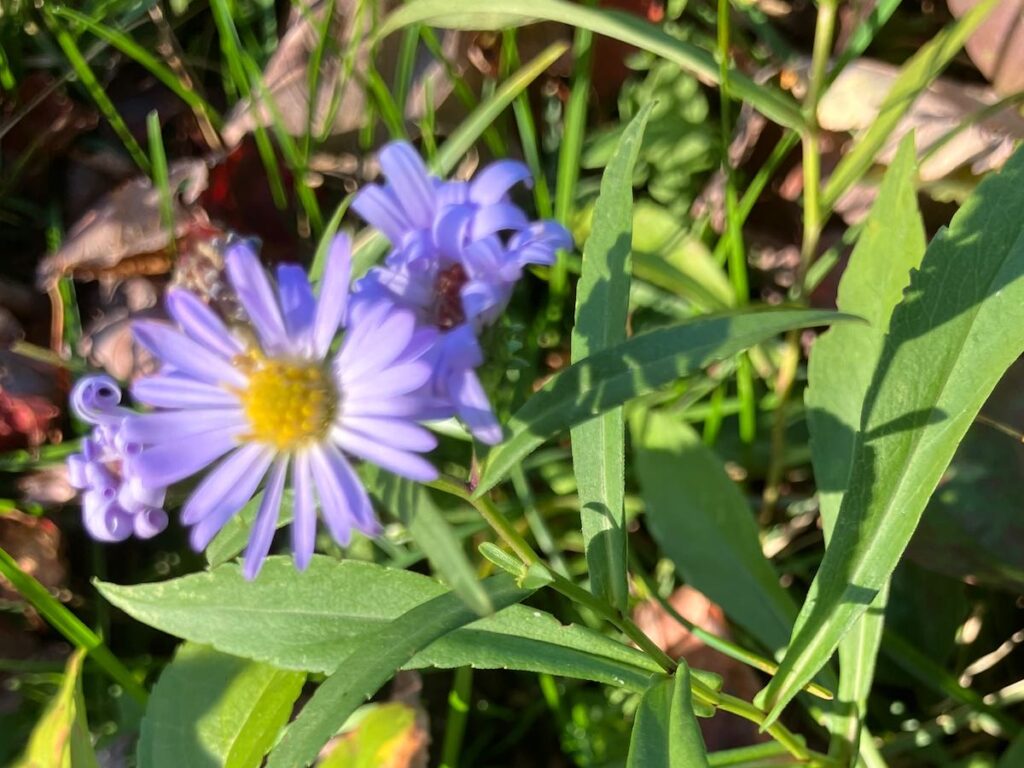
Symphyotrichum novi-belgii: New York Aster
New York Aster loves the Northeast coastal plain, where it soaks up the full sun all summer, and responds with rosy-purple rayflowers from late August thru October. Plants support a whole host of pollinators, and is the larval host for the silvery checkerspot and the pearl crescent butterflies. Give them full sun, medium moisture, and they’ll reach four feet tall and wide.
Symphyotrichum puniceum: Swamp Aster
Swamp asters not only enjoy wet feet, but they also tolerate part shade, and even deep shade. Cheery purple blooms top 3-5’ woody green stems, and bloom in late summer and early fall.
